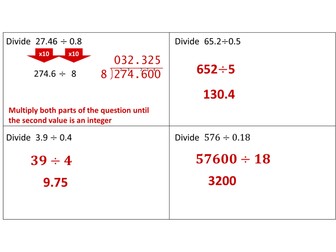Revision: KS3/4 Types of Number
<p>Revision Slides follow a similar pattern - a modeled example with animations built in, followed by three questions of increasing difficulty. Settler questions included, and all questions have answers included. Designed as an end of topic resource to either deliver as a 50-60min lesson, as independent study, or a resource bank of questions.</p>
<p>**These slides cannot be delivered in a single session. Instead, separate into two sessions or delete some slides to adapt the content to your group (there is a significant range in the level of challenge)</p>
<p>Content:<br />
Finding the highest common factor (by listing)<br />
Finding the lowest common multiple (by listing)<br />
Finding the HCF and LCM (by listing)<br />
Prime Factors - expressing as, including index form<br />
Prime Factors - Finding HCF and LCM<br />
Prime factors - Proving square or cube numbers (HIGHER ONLY)<br />
Indices – multiplication, division, brackets<br />
Indices – fraction with integer power, negative powers<br />
Indices – fraction powers<br />
Indices - negative fraction powers<br />
Standard form – converting to SF<br />
Standard form – converting from SF<br />
Standard form – multiplication<br />
Standard form – division<br />
Standard form – addition (by powers)<br />
Standard form – addition (by conversion)</p>
